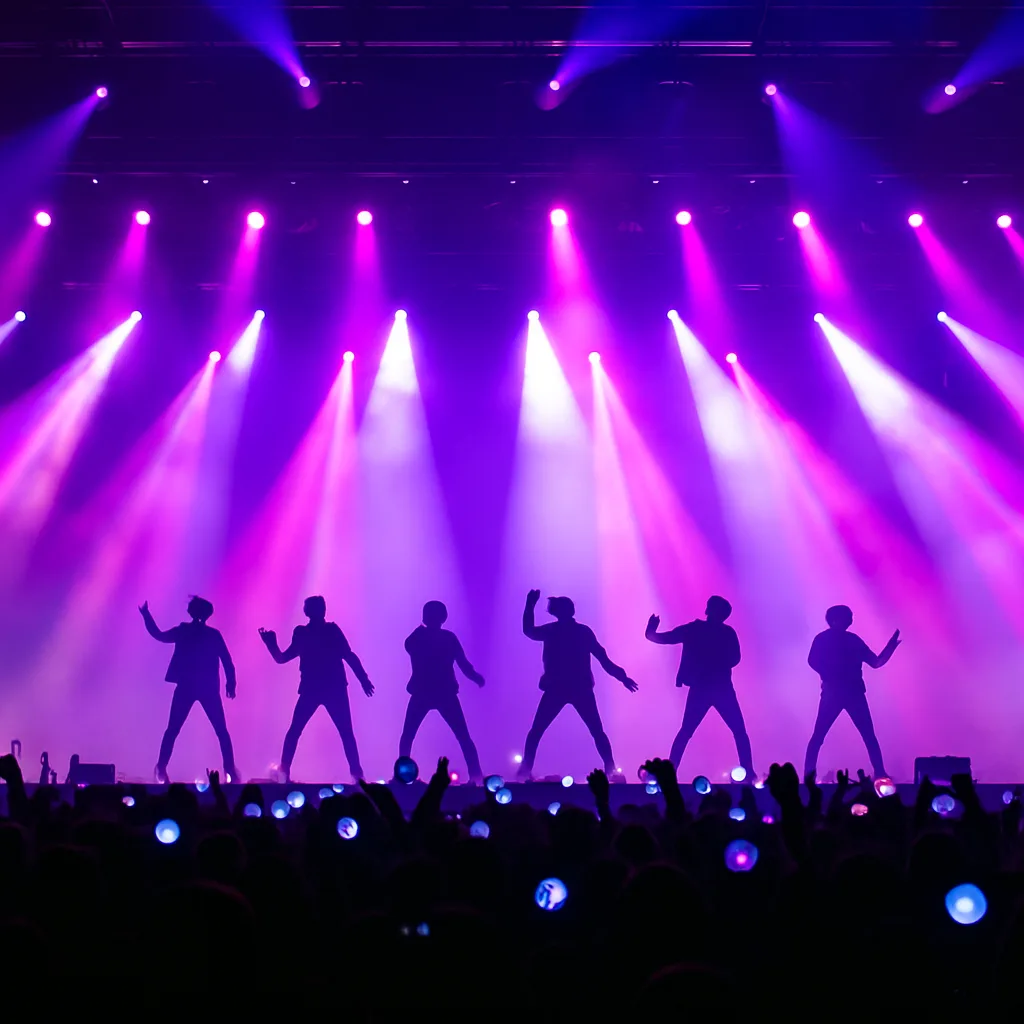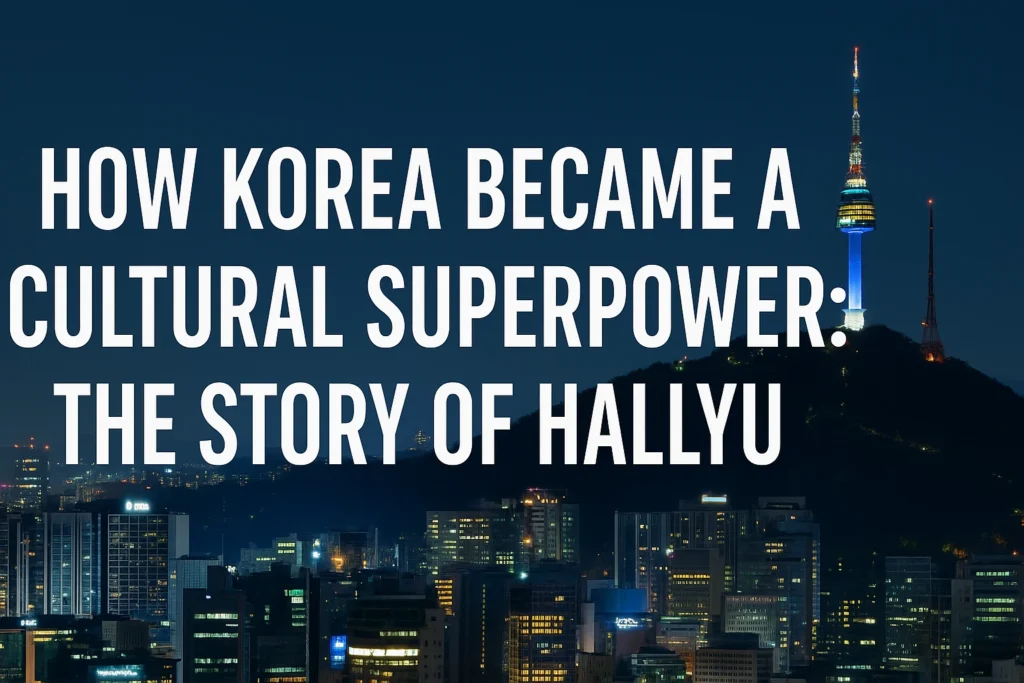Introduction: The Rise of Hallyu
Once a war-torn nation rebuilding from the devastation of the Korean War, South Korea has transformed into a vibrant cultural powerhouse influencing millions globally. The term Hallyu, or the Korean Wave, represents this surge of Korean culture across the globe—through music, television, film, beauty, fashion, and food.
How did this transformation happen? Let’s dive into this inspiring and dynamic story of reinvention and cultural pride.
The Aftermath of War and a Struggling Identity
In the 1950s, Korea was split into two following the Korean War. South Korea was left impoverished and unstable, struggling with political challenges and lacking global cultural presence. At the time, the primary focus was survival and economic rebuilding. American culture dominated Korean media, introducing local audiences to Hollywood, jazz, and rock music.
Despite these influences, Korean creators began crafting their own unique cultural identity beneath the surface. Early local filmmakers and artists experimented with storytelling rooted in Korean traditions, emotions, and everyday struggles. These efforts quietly laid the foundation for what would eventually become a cultural revolution.
Government’s Cultural Strategy: From Censorship to Global Promotion
The 1970s and 1980s were marked by authoritarian rule and strict censorship of the media. Music, literature, and films were often scrutinized for political content. However, things began to change in the 1990s as Korea transitioned into democracy.
The turning point came when the South Korean government recognized the potential of cultural exports. Cultural content was no longer just entertainment—it was a soft power tool. President Kim Dae-jung’s administration initiated efforts to support film, music, and television industries. The Ministry of Culture and the Korean Film Council (KOFIC) were tasked with nurturing talent, funding creative projects, and building infrastructure for global distribution.
By 2000, South Korea had a solid strategy: invest in culture, support creators, and export Korean content. The rest, as they say, is history.
K-Dramas: Emotional Storytelling that Connects the World
Korean dramas, or K-dramas, became one of the most successful pillars of the Hallyu wave. Their growing popularity across Asia in the early 2000s soon spread to the Middle East, Europe, and eventually the Americas.
What makes K-dramas so addictive and impactful?
- Emotionally rich plots that tackle universal human experiences—love, loss, ambition, friendship, and resilience.
- High production values and aesthetic direction.
- Diverse genres: From romantic comedies (Crash Landing on You) to legal dramas (Extraordinary Attorney Woo) and historical sagas (Moon Lovers).
- Relatable characters who show emotional vulnerability, growth, and strength.
K-dramas also shine by reflecting social issues—such as class divisions, education pressure, and mental health—offering both entertainment and depth.
The Role of Streaming Platforms
Global access to platforms like Netflix, Rakuten Viki, and Disney+ accelerated the spread of K-dramas. With subtitles available in multiple languages, Korean shows became binge-worthy worldwide. Series like Squid Game, All of Us Are Dead, and Kingdom broke viewership records and sparked global conversations.
Streaming giants now invest directly in Korean productions, helping the industry grow and globalize even further.
K-Pop: Music, Performance, and the Fandom Revolution
K-Pop has arguably been the most visible and dynamic part of the Korean Wave. It is more than music—it’s a full-blown cultural movement.
The roots of K-pop began in the late 1990s, but the explosion came in the 2010s. Iconic groups like BTS, EXO, Blackpink, Twice, and Seventeen brought a fresh mix of:
- Pop, hip-hop, EDM, and R&B genres
- Synchronized dance routines
- Stunning music videos
- Visual storytelling
- Cultural pride blended with global appeal
The power of fandoms such as ARMY and BLINK created a digital community that propelled Korean artists into mainstream western media and global music charts.
Social Media and Global Reach
K-pop artists pioneered using social media to connect with fans. Platforms like YouTube, TikTok, Twitter, and Instagram became essential tools for engagement, announcements, and viral challenges.
This digital fluency made it possible for K-pop to thrive beyond traditional media, enabling fans to be active participants—through fan art, covers, translations, and merchandise.
Korean Soft Power: Culture as Global Diplomacy
Soft power is the ability to influence others through attraction rather than force. South Korea has masterfully used soft power through its cultural exports.
The impact has been wide-reaching:
- Tourism: More travelers visit Korea to experience places shown in dramas and music videos.
- Education: The demand for learning Hangul and Korean history has soared.
- Business: Korean tech, food, fashion, and beauty products have surged in popularity.
Government programs like Korea.net and KOCIS actively promote Korean culture abroad through cultural centers, exhibitions, and scholarship programs.
Korean Cinema’s Global Conquest
Korean cinema broke international barriers with unique storytelling, genre-mashing, and brilliant direction. Visionaries like Bong Joon-ho, Park Chan-wook, and Kim Ki-duk earned critical acclaim.
Films like:
- Oldboy (revenge thriller)
- Train to Busan (zombie drama with social commentary)
- The Handmaiden (psychological romance)
- Parasite (Oscar-winning class commentary)
These films challenge norms, push boundaries, and showcase Korean creativity to global audiences.
Technology and Timing: The Digital Advantage
South Korea’s high-speed internet and smartphone penetration were crucial. When YouTube, Facebook, and streaming took off, Korea’s content creators were already primed.
This digital edge helped:
- Build fan communities
- Spread viral content
- Empower creators to publish independently
- Encourage hybrid formats (webtoons to drama adaptations)
K-Beauty and Fashion: The Lifestyle Influence
The Hallyu wave brought with it the rise of K-beauty, known for innovation, quality, and stylish packaging. Products like sheet masks, BB creams, and serums became global bestsellers.
K-fashion, influenced by idol styling and drama wardrobes, became popular among youth worldwide. Korean trends began influencing runways, online boutiques, and lifestyle content creators.
Cultural Exports Beyond Entertainment
Korea’s influence now spans:
- Food: Korean BBQ, kimchi, ramen, and street foods
- Literature and Webtoons: International translations and adaptations
- Art and Design: Traditional meets modern aesthetics
- Education: Hallyu has boosted student exchanges and Korean language programs
Hallyu has even reached politics, with cultural diplomacy used to build relations with countries from the U.S. to Southeast Asia.
The Future of Hallyu: Sustaining Global Appeal
Hallyu’s future depends on innovation, inclusivity, and authenticity. Korean creators are exploring:
- LGBTQ+ stories
- Fusion genres (sci-fi + traditional myths)
- Interactive content like K-pop metaverse concerts
The challenge lies in avoiding cultural fatigue, staying fresh, and preserving authenticity while embracing global tastes.
South Korea’s journey from war-torn silence to global cultural roar teaches us that creativity, strategy, and resilience can reshape a nation’s destiny.

Share Your Hallyu Experience
Have you been swept up in the Korean Wave? What K-dramas or K-pop songs do you love the most? Have you tried Korean food, skincare, or fashion? Share your experiences and recommendations in the comments below.



